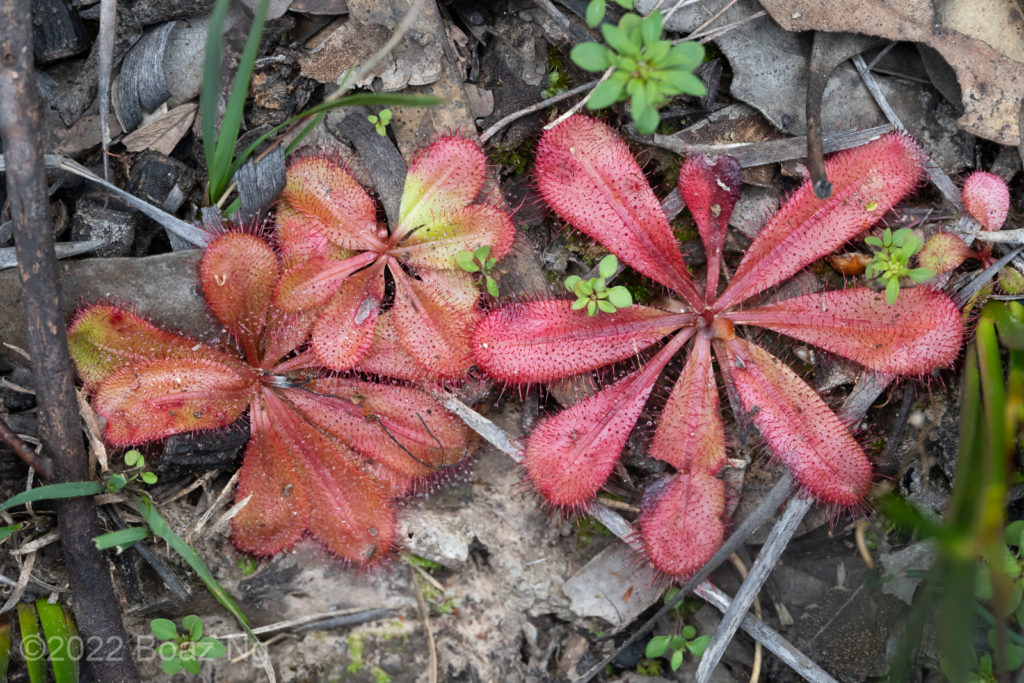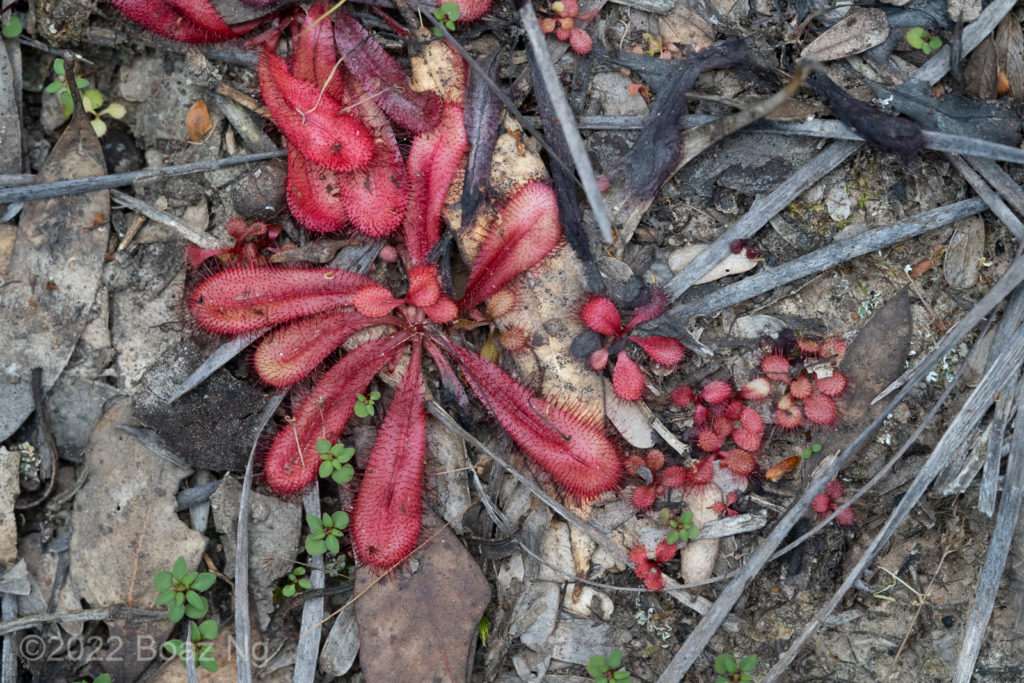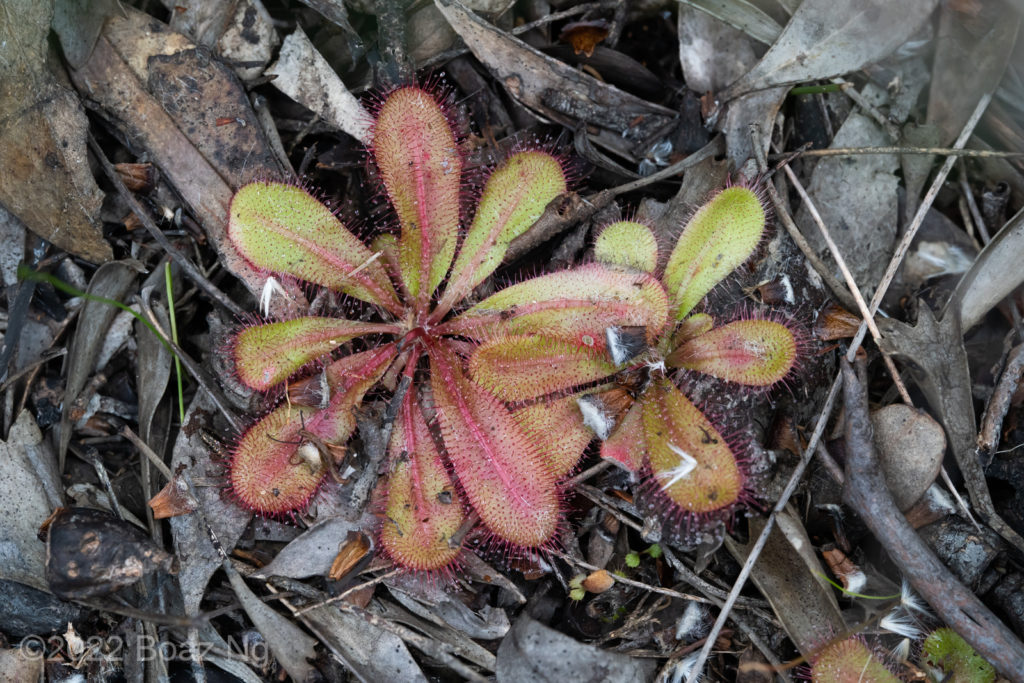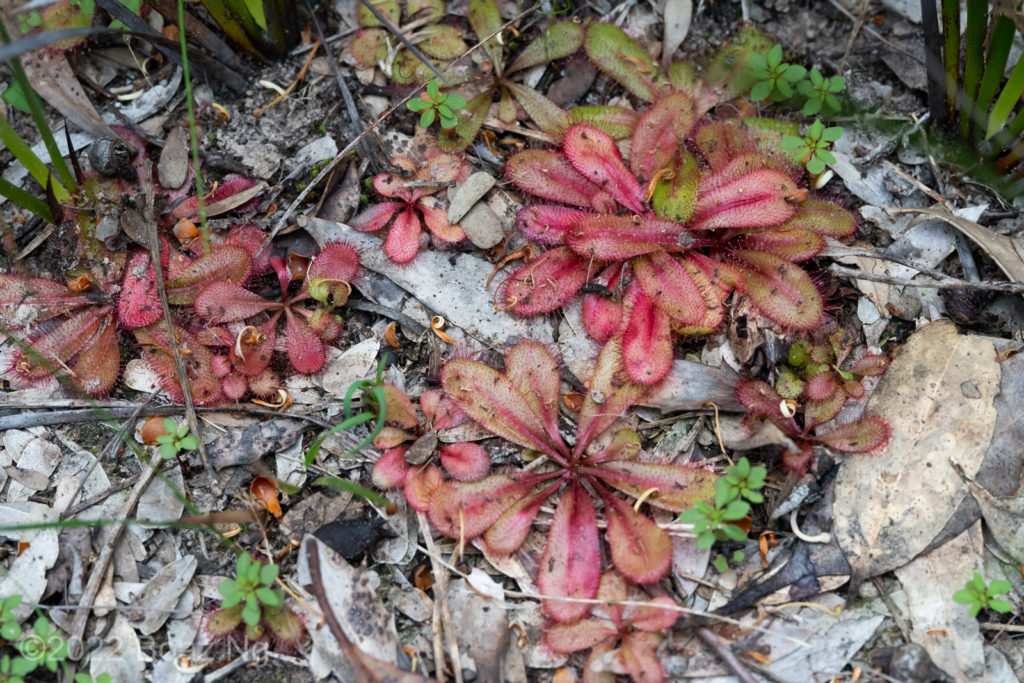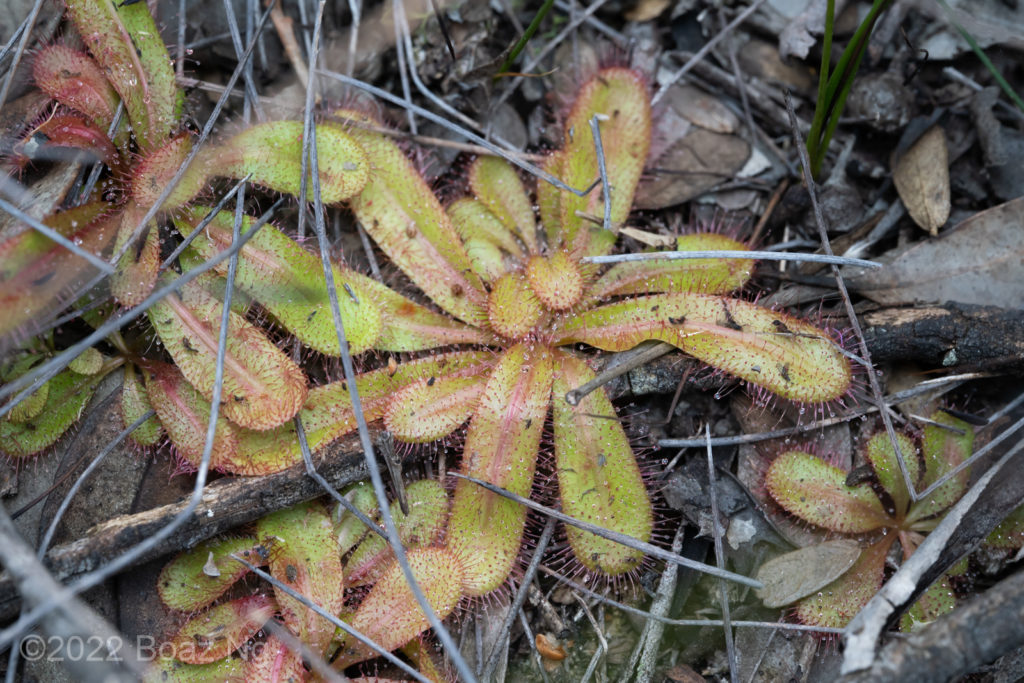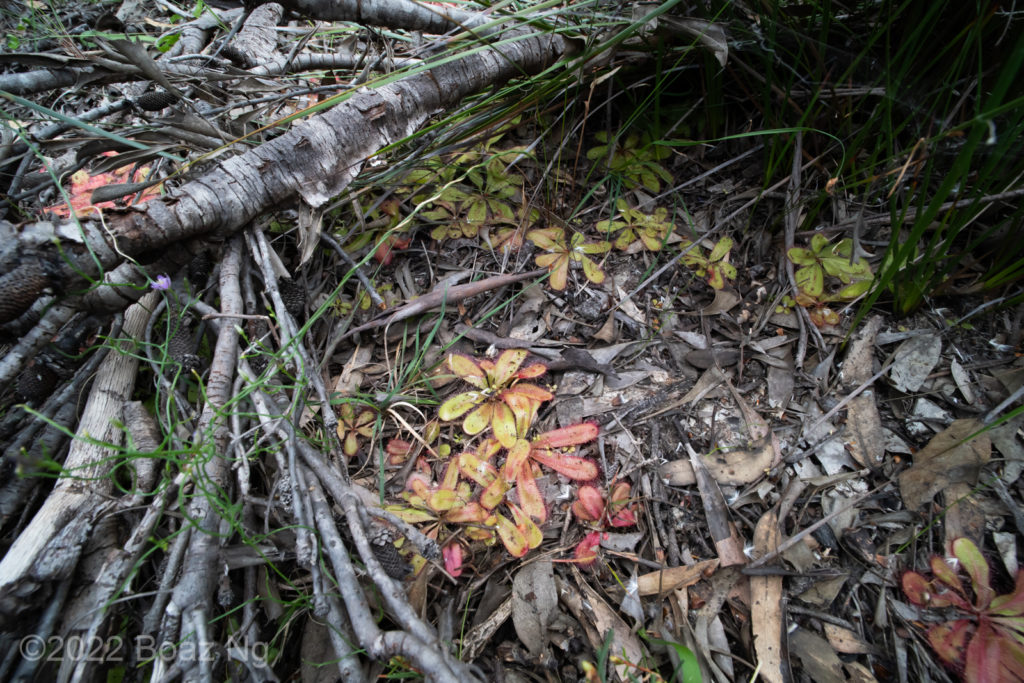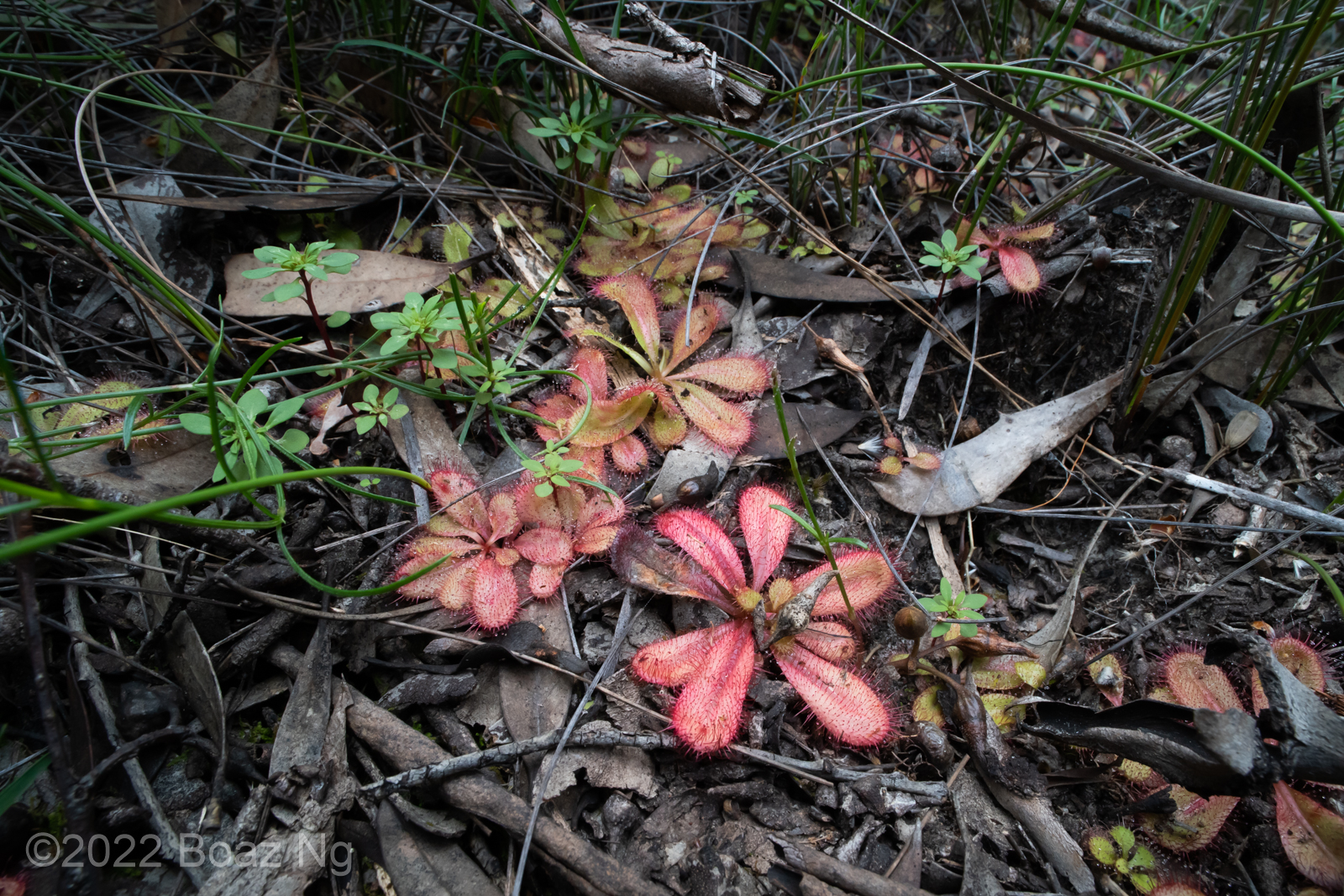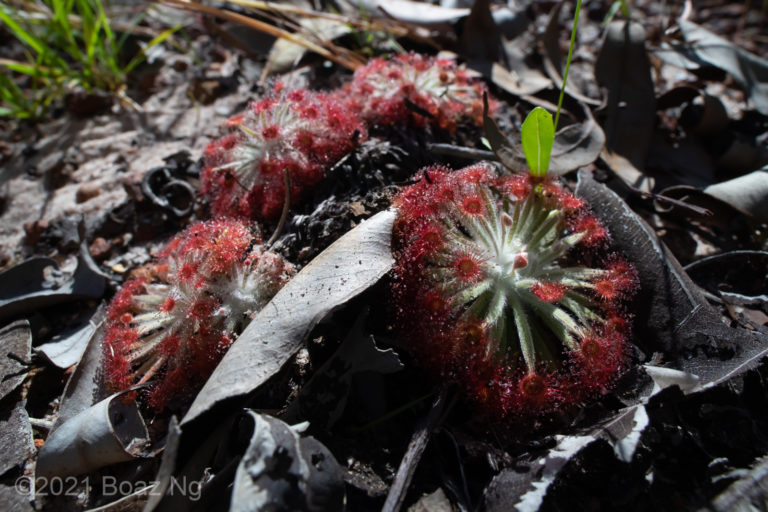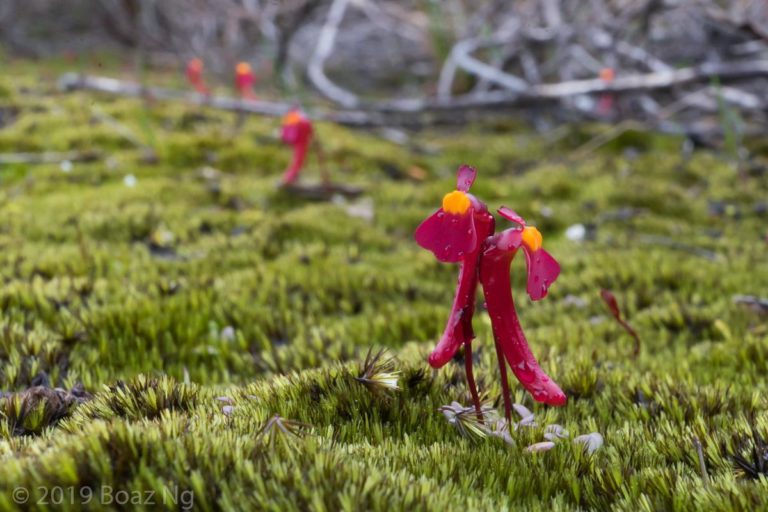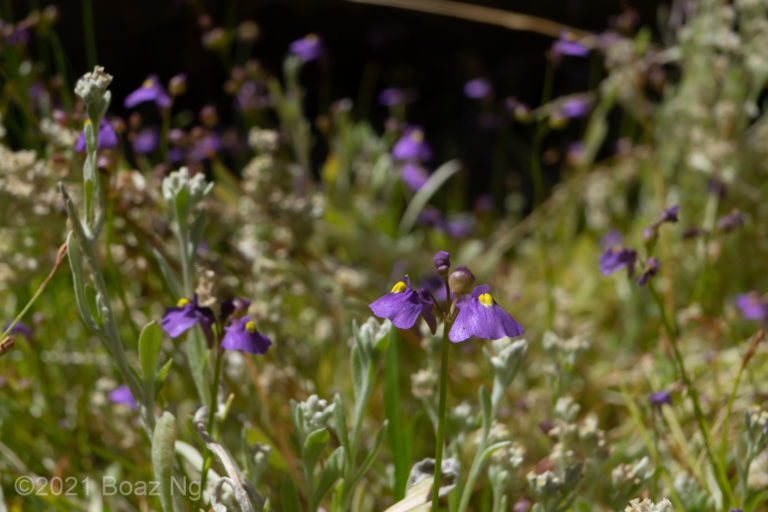Drosera prostratoscaposa is a tuberous sundew endemic to the Fitzgerald River National Park in Western Australia. The species is named for its flower scape, which lies prostrate along the ground shortly after flowering.
Drosera prostratoscaposa forms a rosette that grows up to around 8cm in diameter. The leaves are variable in length and width but are usually rounded at the end and tapering towards the centre. A raised central vein is present around 3/4 of the length of the leaf. The flower scape branches into an inflorescence of several flowers. The scape is initially erect, but falls to lie prostrate along the ground after flowering.
The species is known from a single valley in the Fitzgerald River National Park. The species grows amongst shrubs on the lower slopes of small hills in sandy and clayey substrates. The area is poorly accessible and it is likely that the species grows elsewhere in the national park.
Drosera prostratoscaposa is similar to other rosetted tuberous species but is distinguished by its multiflowered inflorescence which lies prostrate after flowering (the scapes of the other rosette species of WA are single or two-flowered). Outside of flowering, it is basically indistinguishable from Drosera bulbosa, which shares a raised central vein.
